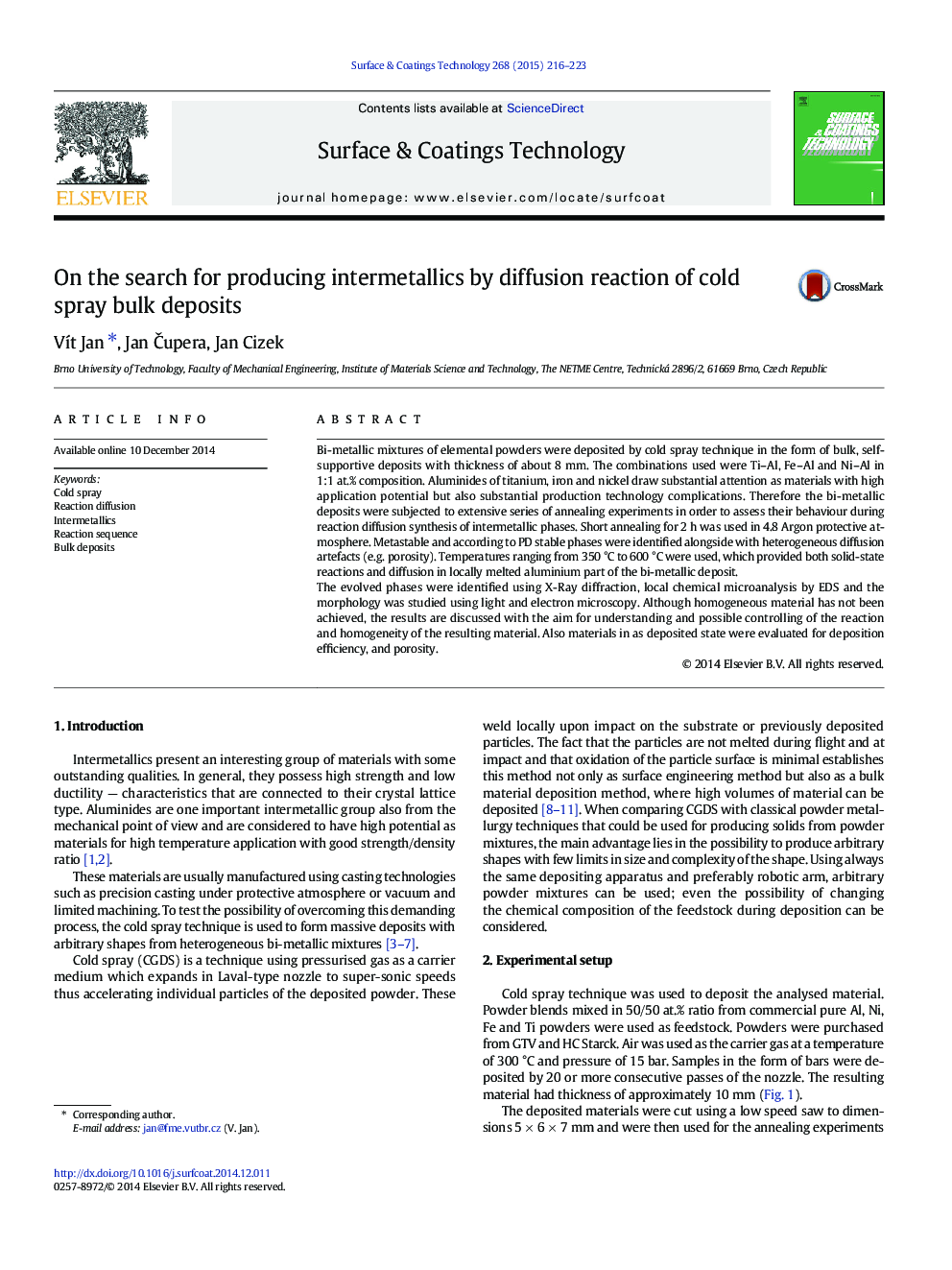| Article ID | Journal | Published Year | Pages | File Type |
|---|---|---|---|---|
| 1657098 | Surface and Coatings Technology | 2015 | 8 Pages |
•Bulk deposits were made using cold spray from mixtures of Fe, Ni or Ti and Al•Limited plasticity appears in Al matrix even in as-deposited state•Isothermal annealing induced intermetallic phases formation by reaction diffusion•Open porosity materials have been repeatedly prepared•The measured features include DSC, porosity evolution, new phases identification, chemical profiles across phases interfaces
Bi-metallic mixtures of elemental powders were deposited by cold spray technique in the form of bulk, self-supportive deposits with thickness of about 8 mm. The combinations used were Ti–Al, Fe–Al and Ni–Al in 1:1 at.% composition. Aluminides of titanium, iron and nickel draw substantial attention as materials with high application potential but also substantial production technology complications. Therefore the bi-metallic deposits were subjected to extensive series of annealing experiments in order to assess their behaviour during reaction diffusion synthesis of intermetallic phases. Short annealing for 2 h was used in 4.8 Argon protective atmosphere. Metastable and according to PD stable phases were identified alongside with heterogeneous diffusion artefacts (e.g. porosity). Temperatures ranging from 350 °C to 600 °C were used, which provided both solid-state reactions and diffusion in locally melted aluminium part of the bi-metallic deposit.The evolved phases were identified using X-Ray diffraction, local chemical microanalysis by EDS and the morphology was studied using light and electron microscopy. Although homogeneous material has not been achieved, the results are discussed with the aim for understanding and possible controlling of the reaction and homogeneity of the resulting material. Also materials in as deposited state were evaluated for deposition efficiency, and porosity.
